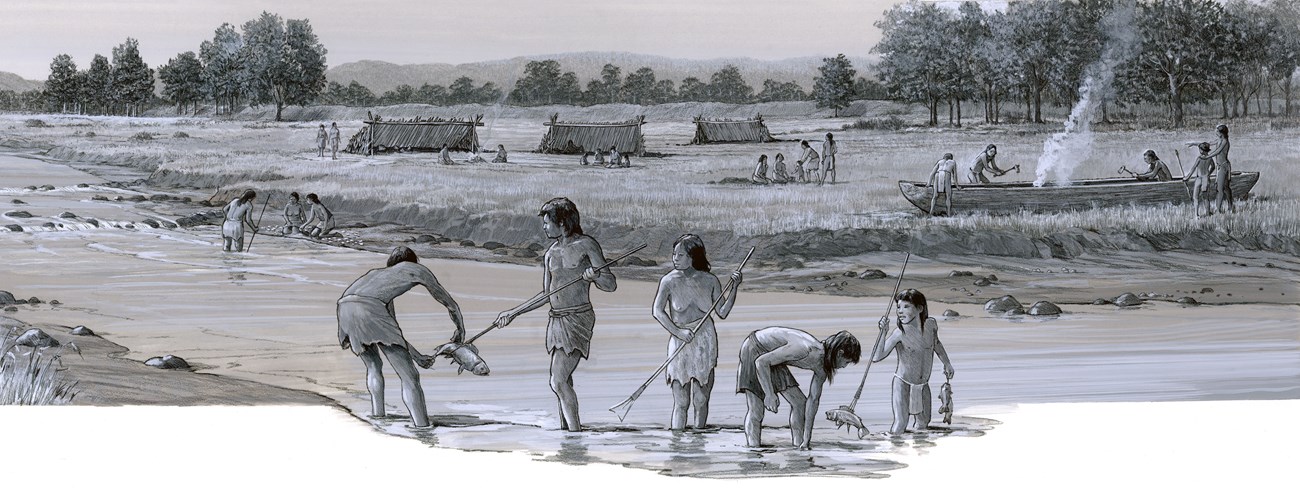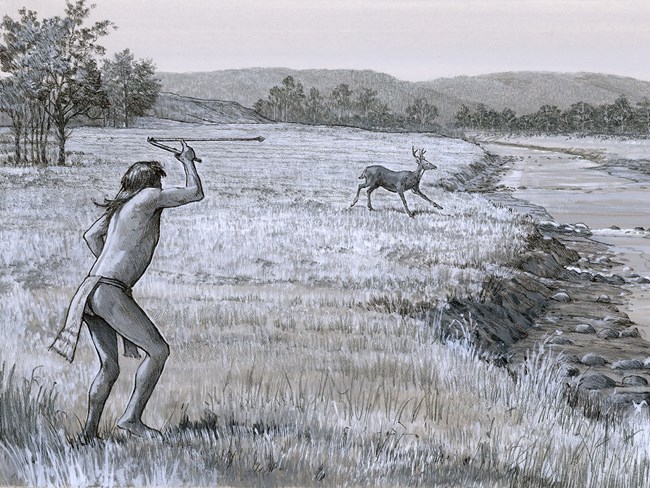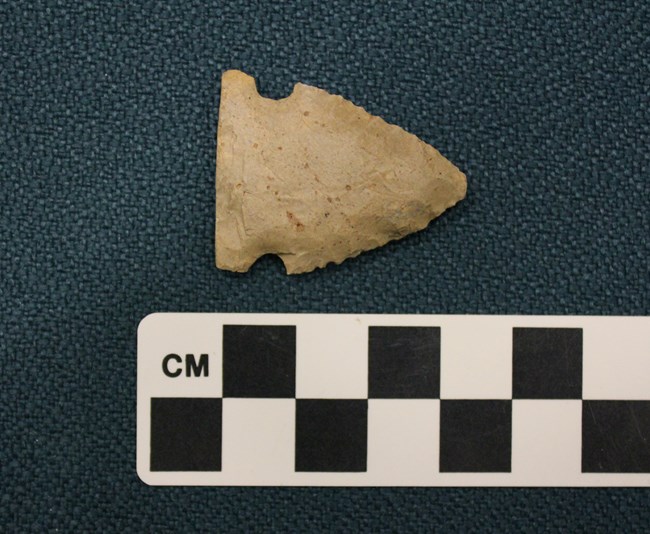Last updated: December 15, 2025
Article
Discover the Archaic People

National Park Service
Dates
10,000 - 2,500 years ago
Imagine
The motion is monotonous, forward and back, forward and back. Occasionally the women stop to stretch their arms and necks. Then it’s back to work, grinding plants between two stones. Flakes of the stone becoming part of the meal. Conversation helps pass the time. There are several families living together for the season. They’ve returned to this bluff above Tinkers Creek for several years now, but they’ll be moving on in a few months. Just then the men return from the hunt with a white-tailed deer. After pausing to appreciate their good fortune, the women return to the task at hand.

National Park Service
Taking Advantage of a Warmer Climate
Around 10,000 years ago, the Cuyahoga Valley began to resemble what you see today. Temperate deciduous forest replaced the subarctic evergreen forest and wetlands of the Paleo period. As a result, the amount and variety of food increased dramatically, but it varied with the seasons.
During the Archaic period, people hunted white-tailed deer, rabbit, elk, bear, and turkey with a revolutionary new tool called an atlatl. This spear-thrower was weighted by stones. It had the force and accuracy to bring down large game from safe distances. There were big changes in how they made points for knives and spears. Another innovation was using a grinding technique to create sturdy granite axes for woodworking. Archaic people used these axes to fell and hollow trees to make canoes. They also fished in the river and its streams with bone fishhooks and cordage nets, and collected mussels.

NPS Midwest Archeological Center / Karin Roberts
Plants became an important part of the daily meal. Archaic people gathered wild hickory nuts, walnuts, berries, and seeds. Later in this period, they started domesticating plants such as squash. Having food sources that were more stable allowed valley residents to stay in base camps longer and travel in bigger groups. (As a result, they left more artifacts behind for future archeologists to uncover!) Archaic artifacts such as grinding stones, the remains of wooden posts from living structures, and fireplace stones help us understand camp life. Local and regional chert was important for manufacturing a variety of specialized stone tools.
Their yearly return to the same camps may have encouraged them to bury their dead in a ceremonial manner. At Terra Vista No. 2, a base camp located in the national park, archeologists uncovered six burials within a gravel knoll. The mineral red ochre covered the bodies.
Later in this period, people developed trade routes, bringing new materials and ideas to Ohio.
Archeologists don’t know if the Archaic people descended from the earlier Paleo people who traveled through Cuyahoga Valley. One theory is that they were a different people who moved here from the Southeast region of the US.
Places to Visit
Cuyahoga Valley has hundreds of small Archaic sites. To protect them, we do not make their exact locations public. If you want to see the general area of an Archaic base camp, visit the Terra Vista Natural Study Area on Tinkers Creek Road, near Canal Exploration Center. Note that it is illegal to collect artifacts on national park land.
The best place to learn more is at the Cleveland Museum of Natural History. The Burrell Orchard site in Lorain County is shedding new light on the Archaic period.

National Park Service
